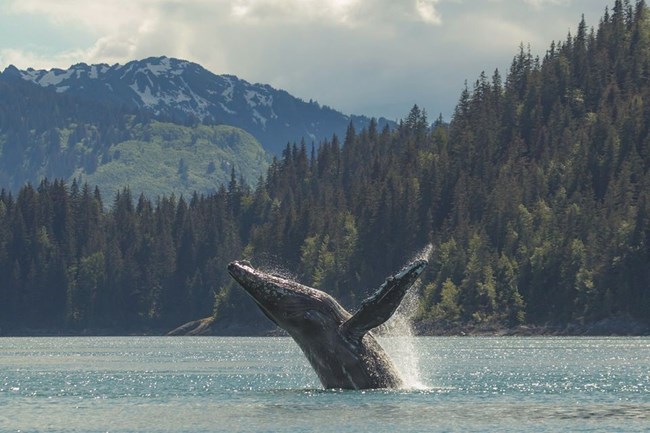Learn about NRCAs
The Natural Resource Condition Assessment (NRCA) Program provides framework, funding, and publishing support to parks to aid in the synthesis and documentation of natural resource conditions. Condition assessment reports are a tool to describe selected park resources, and record a snapshot of their current condition, identify trends, and identify potential or current threats and stressors. Understanding the condition and trend of natural resources is key for parks and NPS planners to appropriately prioritize and allocate stewardship resources.

NPS/Sean Nielson
There is a tremendous diversity of flora and fauna supported by the park. The remoteness and protected status of Glacier Bay National Park may give the impression that its resources are largely undisturbed and in a pristine, natural condition. While this is true of some areas, others are threatened by anthropogenic stressors.
Traditional NRCA Report: 2017
In order to better understand the natural resources and processes in Glacier Bay National Park and Preserve, a Natural Resource Condition Assessment was written and published in 2017. This assessment was a collaborative effort between NPS staff and St. Mary’s University of Minnesota. This team chose 24 resource topics to evaluate:
- Glaciers |
- Harbor porpoise |
||||||||
- Marine shoreline |
- Stellar sea lions |
||||||||
- Harvested marine invertebrates |
- Anadromous fish |
||||||||
- Murrelets |
- Mid-trophic level marine forage community |
||||||||
- Sea ducks |
- Pacific halibut |
||||||||
- Breeding landbirds |
- Plants |
||||||||
- Glaucus-winged gulls |
- Western toad |
||||||||
- Moose |
- Air quality |
||||||||
- Bears |
- Water quality |
||||||||
- Mountain goats |
- Underwater soundscape |
||||||||
- Harbor seals |
- Wilderness |
||||||||
- Humpback whales |
|
||||||||
- Sea otters |
|
Thirteen resource topics were considered to be in good condition, five resource conditions were of moderate concern, three resource conditions were of significant concern, and four resources were not given a condition status due to lack historic data, a clear understanding of reference conditions, or current information. Despite the large expanse of land that Glacier Bay National Park and Preserve covers, many of the resources discussed in this report are interrelated and share similar management concerns.
Several of the park and preserve’s data needs involve the continuation or expansion of existing monitoring programs to accumulate enough data for identification of trends over time (e.g., glaciers, water quality, and sea otters). Many of the identified data gaps relate to expanding existing monitoring efforts to include broader parameters that may include how a component’s prey community is structured (e.g., humpback whales, murrelets) or how the component may interact with its ecosystem. Continued monitoring of these priority resources combined with management efforts directed at minimizing threats will aide many of these communities and maintain their presence and integrity within the park. Continuing advancements in the scientific understanding of this park and preserve’s resources will not only benefit the park, but also other locales with these resources.
Several of the park and preserve’s data needs involve the continuation or expansion of existing monitoring programs to accumulate enough data for identification of trends over time (e.g., glaciers, water quality, and sea otters). Many of the identified data gaps relate to expanding existing monitoring efforts to include broader parameters that may include how a component’s prey community is structured (e.g., humpback whales, murrelets) or how the component may interact with its ecosystem. Continued monitoring of these priority resources combined with management efforts directed at minimizing threats will aide many of these communities and maintain their presence and integrity within the park. Continuing advancements in the scientific understanding of this park and preserve’s resources will not only benefit the park, but also other locales with these resources.
For other reports and natural resource datasets visit the NPS Data Store.
Source: NPS DataStore Collection 7765 (results presented are a subset). To search for additional information, visit the NPS DataStore.
Last updated: December 16, 2022
